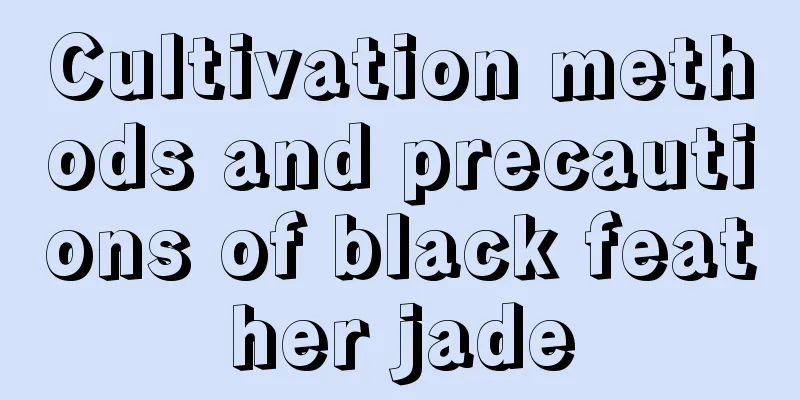How to grow Flammulina velutipes

1. Maintenance methods1. Substrate selection: Sawdust, rice bran or bran can be used as the culture medium in a ratio of 8:2 and mixed with water. The pH value should be adjusted to around 6. It is best to choose sawdust from broad-leaved trees, and avoid pine or fir. Note that too much sawdust can easily cause the culture medium to dry out, and sawdust that is too fine can result in poor air permeability. 2. Light management: Both its hyphae and fruiting bodies can grow in a lightless environment, but the cap of the fruiting body grows slowly and is smaller under lightless conditions, which can easily lead to deformed mushrooms. Excessive light can easily lead to poor growth of the stipe, so a weak scattered light environment is appropriate. 3. Water management: During the mycelium growth stage, the water content of the culture medium should be maintained at 65%-70%. If the water content is lower than 60%, it will easily lead to poor growth. If it is higher than 70%, the oxygen in the culture medium will decrease, which will also affect the mycelium growth. During the fruiting body formation stage, the environmental humidity should be maintained at 85%, and at around 90% during the fruiting body growth stage. 4. Temperature management: Its temperature control is relatively strict and needs to be adjusted in stages. During the spawning period, it is best to maintain a temperature of 22℃-25℃. The temperature should be controlled at 10℃-15℃ during the budding period. The temperature required during the growth period is about 8℃, and the temperature during the growth stage should be 8℃-15℃. 2. Breeding techniques1. Reproduction method: Its reproduction is relatively complicated compared with other edible fungi, and is divided into two stages: asexual and sexual cycles. The asexual stage can produce a large number of binucleate or mononucleate powdery spores, and the hyphae can be broken into arthrospores. They can germinate to form mononucleate or binucleate hyphae under suitable conditions and continue to develop and grow until basidiospores are formed. 2. Growth-promoting methods: Properly adjusting the moisture, light and temperature of the environment at each stage of its growth can effectively promote its growth and development. 3. Problem diagnosis and treatment1. Pests: High temperature and high humidity environments are prone to pests. The water content of the culture medium and the ambient temperature should be strictly controlled to prevent pests. 2. Root rot: If the water content of the culture medium is too high and the environment is too humid, it will easily cause root rot. The rotten roots should be dug out and burned in time. IV. Other issues1. Toxicity: It is not toxic, but the digestion process is slow. People with poor gastrointestinal function should not consume too much. 2. Who is it suitable to be given as a gift: Its cap is smooth and tender, its stem is crisp and nutritious, it can enhance human immunity and is deeply loved by people. It is suitable to be given as a gift to people with weaker constitutions. |
>>: Cultivation method of Kudingcha
Recommend
Champagne Rose Flower Language
1. Flower language introduction Its flower langua...
How to grow money tree and how to make it flourish
1. Breeding methods 1. Soil: When planting money ...
Gynostemma pentaphyllum growth environment conditions and characteristics
Gynostemma pentaphyllum growth environment condit...
How to care for Amaryllis in winter
Is Amaryllis afraid of cold? Amaryllis is afraid ...
What are the cultivation methods and precautions of Clematis
Clematis Introduction Clematis, also known as Cle...
How to breed Phoenix succulent and what to pay attention to
Phoenix succulent breeding method There are three...
How to grow pennywort in soil until it overflows the pot?
The pennywort is one of the most common small aqu...
Can children drink monk fruit soaked in water? What should they soak with it?
1. Can children drink it? If your child has sympt...
How to propagate ginkgo, how to propagate ginkgo trees
1. Cutting Ginkgo cuttings are divided into old b...
The difference between hops and beer paste
1. Hops Hops is a herbaceous plant with dense hai...
Can lychees be grown in Guangxi?
Can lychees be grown in Guangxi? Of course, lyche...
Cultivation methods and precautions of Tigerthorn
Euphorbia milii is a creeping shrub, also known a...
Does Michelia prefer shade or sun?
Does Michelia prefer shade or sun? Michelia is ea...
Illustration of the propagation method of Monstera
1. Planting Wait until the seeds of Monstera are ...
The most fragrant flowers for indoor potted plants
1. Jasmine There are many varieties of jasmine, m...









